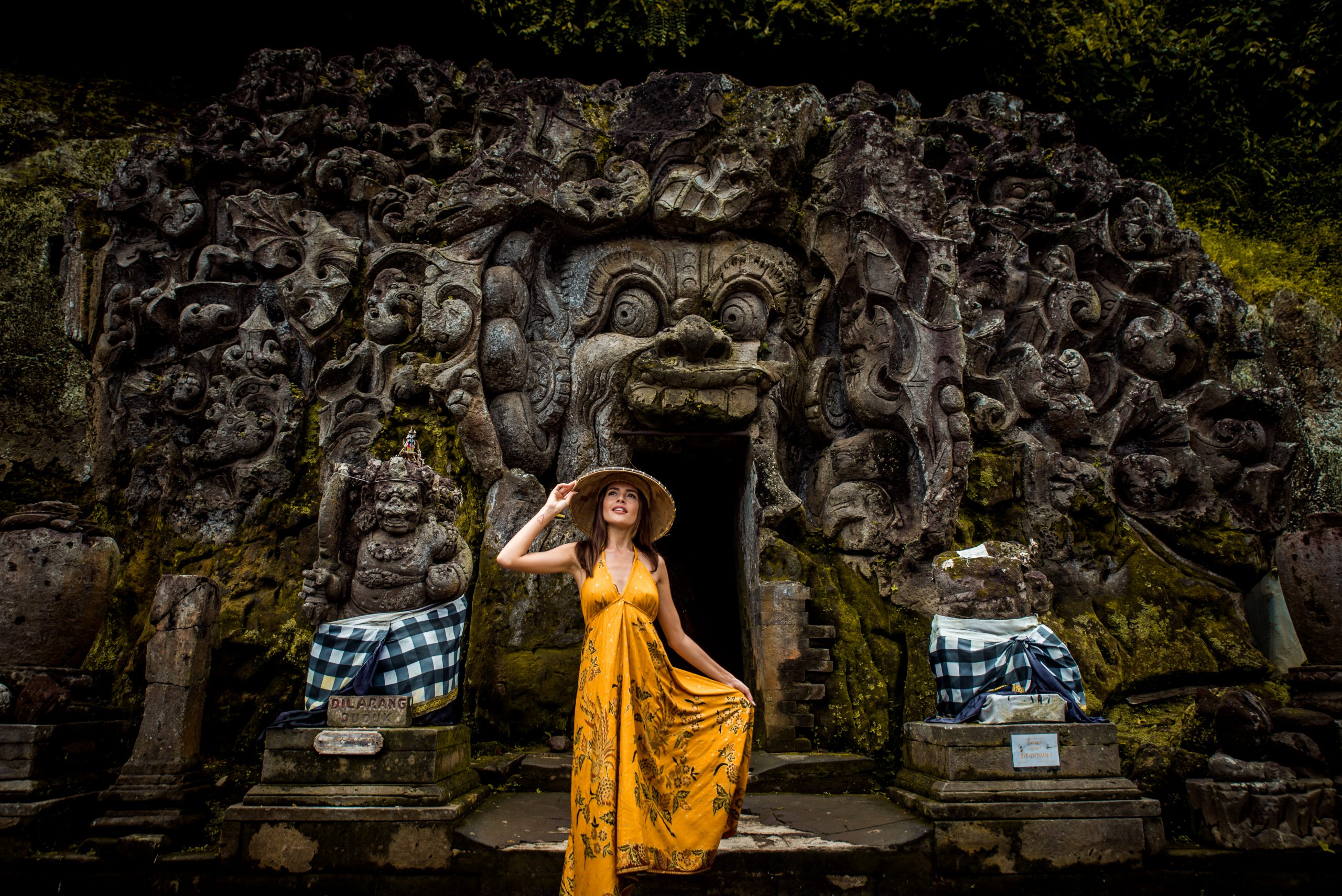
It is their time.
Angela Bassett, Jamie Lee Curtis, Cate Blanchett, Brendan Fraser, Colin Farrell, and Brendan Gleeson, each 2023 Oscar nominees, took a detour on the road to the Academy Awards to accept honors from the Santa Barbara Film Festival. The SBIFF has distinguished itself on the festival circuit for its artist tributes.
The roughly two-hour conversations before rapturous, sometimes rowdy audiences (witnessed by me remotely), take in the everything, everywhere all at onceness of their careers: Bassett’s “internal life force that is intoxicating to watch,” Curtis’ “thriving while enduring,”’ Fraser’s “Brenaissance,” Blanchett as a “master of her craft,” and Farrell and Gleeson, the “the chocolate and the peanut butter of the acting world; really great and delicious on their own, but when you combine them, next-level amazing.”
“The Queen is in the house,” proclaimed SBIFF executive director Roger Durling of Bassett, who, over the course of her nearly 30-year career, has left an enduring legacy not just of indelible performances, but, as Durling noted, “paving the way for a younger generation of artists of color who now see themselves represented on the screen.”
Bassett herself did not see much representation on the screen—big or small—when she was growing up. Just the appearance of Diana Ross and the Supremes on the variety showcase “The Ed Sullivan Show” was enough to inspire celebratory screams, she said.
Seeing James Earl Jones onstage when she was 15 stirred her interest in acting, but that did not seem like a practical dream, she said. She tried other career paths, including teaching, but she told the SBIFF audience, she concluded that “it would be as difficult to do something I didn’t have a love or passion for as it would be to pursue this impractical dream.”
She revealed that she was advised against doing the made-for-TV miniseries “The Jacksons: An American Dream,” in which she portrayed matriarch Katherine Jackson. “One thing is true,” she said. “They adored their mother. Reverence for mothers; that’s what I want to put out into the world.”
She earned her first Oscar nomination for her electric, gritty performance as Tina Turner in “What’s Love Got to Do With It.” She described the physicality of running in character as “toward God and away from the devil.”
As Queen Ramonda in “Black Panther: Wakanda Forever,” Bassett is the first actor to be nominated for a performance in a Marvel film. She dismissed the “Marvel naysayers,” saying, “I appreciate those who appreciate me.”
Ryan Coogler, her “Wakanda Forever” director, presented Bassett with her Montecito Award. He shared that he first saw her onscreen at the age of five when his father took him to see the age-inappropriate “Boyz n the Hood.” His father later took him to “Malcolm X.” Coogler said that the film’s proposal scene had a particular impact on him.
“Working with her was a revelation,” he said.

Of this year’s SBIFF honorees, Jamie Lee Curtis perhaps has had the most untraditional career. While she was the daughter “two bonafide movie stars—Tony Curtis and Janet Leigh“—she originally planned to be a police officer.
“I’m an unplanned actor,” she told the SBIFF audience.
She received her first Academy Award nomination for her performance as IRS agent Deirdre Beaubeirdre in The Daniels’ breakout art film “Everything Everywhere All at Once.” From the SBIFF, she received the Maltin Modern Master Award and was interviewed by Leonard Maltin himself.
“My parents would have loved this,” Curtis said.
In conversation about her unorthodox career, Curtis was a delight, thoroughly “on,” but not in a facile way. She has no filter. “I’m the only Oscar nominee who has ever sold yogurt that makes you shit,” she said mock-proudly (she also shared a rather prodigious impression of a crying infant).
Curtis, untrained, began her career as a contract player for Universal. She credits three Johns as her champions. First was John Carpenter, who cast her in her iconic role as Laurie Strode in the original “Halloween.”
Her confidence was given a tremendous boost, she said when Carpenter called her at home after the first day of shooting. Curtis feared she was about to be fired, but Carpenter instead reassured her that she was doing a great job.
“Everything,” she said of her career, “can be traced back to ‘Halloween.’”
But, she said, that film, an instant horror classic and box office phenomenon, did not immediately lead to other significant opportunities. She appeared in “Charlie’s Angels” and “The Love Boat.”
Carpenter cast her again in “The Fog.” Appearing on that film’s poster, Curtis said, “was a big deal.”
The second John who played a pivotal role in her career was John Landis, who cast her opposite Eddie Murphy and Dan Aykroyd in “Trading Places.” That film, a comedic departure from the horror films that had earned her the title of Scream Queen, “flipped the switch,” she said.
The third John was John Cleese, who sought her for “A Fish Called Wanda.” She shared a lesson she learned at the then-age of 25 about trusting her instincts. A big scene in the film opposite Kevin Kline was originally shot in a way that did not feel right to her, but she said nothing. When the scene played to silence during the dailies, she tearfully insisted to the producer that the scene needed to be reshot. It was on the last day of shooting, and it became one of the film’s high points. “Trusting my instincts brought that scene to fruition,” she said. “I was a young girl. I didn’t know, yet I was right. Now, I do.”
James Cameron’s “True Lies” yielded two triumphant anecdotes. The first concerned Curtis trusting her instincts more forcefully and lobbying the production designer to light her properly in the film’s classic interrogation scene with Arnold Schwarzenegger. The script called for the room to be lit with a single bulb. “Mama needs her face lit,” she joked. In the second, she credited Schwarzenegger with instantly acquiescing to Cameron’s insistence that because the film was a “domestic epic” about a marriage, Curtis’ name should be included alongside his above the title. “Which he did not have to do,” Curtis emphasized.
Kismet often plays an important role in an actor’s career. Two of Curtis’ biggest hits were “Freaky Friday” and “Knives Out,” two roles for which she was a last-minute replacement.
Curtis shared several pieces of wisdom. One was for actors to “expand your palate, so you have better choices as a performer.” Another was to stay on set rather than retire to your trailer after shooting a scene. “It’s my secret sauce,” she said. “Be an active set-sitter.”

Brendan Fraser should be acclimated to the rarified climate of Oscar season. He has been touted as the Best Actor frontrunner since Darren Aronofsky’s “The Whale,” in which he portrays a suicidal 600-pound man, debuted on the film festival circuit last fall. His emotional reactions to the standing ovations the film received at the Venice and London Film Festivals went viral on social media.
But he still seems taken aback by the so-called “Brenaissance.” The SBIFF honored him with its American Riviera Award. After the inevitable career-spanning montage of Fraser’s 30-year career, he said, “I know it’s a term of endearment; I get it. I’m very grateful, and I appreciate all the support I have seen in recent years.” But “The Whale” was not a comeback, he insisted later. He has always worked steadily.
Fraser’s father worked for Tourism Canada, and the family moved every two-to-three years, Fraser said. In the 1970s, the family lived in Holland. Family vacations brought him to London, where he first started attending plays. “It opened my eyes to a world of wonder,” he said. “It was the biggest, best toy box my kid brain could imagine. And I remember thinking, I want to do that. How do you do that?”
His breakout year was 1992, in which he starred in two films that displayed his range. In the period drama, “School Ties,” he portrayed a closeted Jew at a prestigious prep school in the 1950s. He told the SBIFF crowd that he learned about acting by watching his costar Matt Damon, with whom he screen-tested. “Just bear your soul and hope for the best,” Fraser said.
The second film released that year was the opposite of Oscar bait, “Encino Man,” in which he portrayed a thawed-out caveman, Link. Fraser said that he drew on Buster Keaton for his inspired physical performance. Audience members gave references to the film a tumultuous reception. “Thank you for your kind recognition of him,” Fraser said.
Fraser’s career is nothing if not varied, from the physical comedy of “George of the Jungle” (another reference that got a wild response from the crowd) to the action-adventure “The Mummy” franchise and the controversial Best Picture winner, “Crash.” Interviewer Pete Hammond cited Hugh Wilson’s “Blast from the Past,” another fish-out-of-water comedy in which Fraser starred as a young man who emerges from his scientist father’s fallout shelter after more than 30 years, as one of his most underrated films and worthy of reconsideration.
“There is something special about Brendan,” Sarah Michelle Gellar, a friend of 15 years and co-star (“The Air That I Breathe”), said in her awards presentation remarks. “He has the same adventurous heart that you saw in ‘The Mummy,’ the same depth of loyalty as George of the Jungle, the same ridiculous sense of humor as ‘Encino Man,’ and like Charlie in ‘The Whale,’ the same desperate longing to do the right thing for the people he loves.”
Fraser noted that another of this year’s Oscar nominees, Ke Huy Quan, was also in “Encino Man.” It’s been more than 30 years, he proclaimed: “We’re still here.”

Cate Blanchett’s Outstanding Performer of the Year award for her instantly iconic performance as the seriously compromised conductor in “TÁR,” is the Oscar-winning actress’ third honor from the SBIFF.
Her performance in “TÁR” has already garnered accolades from the National Society of Film Critics and the New York and London Film Festivals, to name but a few. With this year’s nomination, she set a record for the most films starred in that were nominated for Best Picture (10).
She is, as Roger Durling said, “a natural chameleon,” as is evidenced by her filmography that includes costume and period dramas (“Elizabeth”), thrillers (“The Gift”), fantasy (“The Lord of the Rings” trilogy), drama (“Blue Jasmine” and “Carol”), comedy (“Bandits”), animation (“How to Train Your Dragon 2”) and whatever “I’m Not There” is.
In presenting her with her award, her “TÁR” director, Todd Field, noted the depth and breadth of the directors with whom she has worked: Woody Allen, Bruce Beresford, Alfonso Cuaron, Guillermo del Toro, David Fincher, Ron Howard, Peter Jackson, Terrance Malick, Martin Scorsese, and Stephen Soderbergh, “to name a lucky few.”
Blanchett was in high spirits and had good humor in her extensive conversation with Feinberg. “This is a deep dive,” she remarked. “Do you want me to lie down?”
Theatre, Blanchett proclaimed, is her first love, and where she feels the freest.
It was the Sydney Theater Company that launched her acting career. She was an understudy for the Caryl Churchill play, “Top Girls.” Following her appearance in “The Curious Case of Benjamin Button” in 1998, she took a five-year hiatus from films (save for the occasional small role) to operate and program the company with her husband (she had also had her third child).
One of her most vivid recent portrayals was as conservative firebrand Phyllis Schlafly in the miniseries “Mrs. America.” “Women have been divided from each other along political lines that are often drawn by men,” she noted, “and perhaps this miniseries can help bridge across that divide to find those points of connection.”
Speaking about “TÁR,” which is arguably her most celebrated and most talked-about performance, Blanchett said, “Sometimes a role hits you at a time when you’re open to the subterranean aspects of what the film is dealing with. There was so much to do just to get to first base; to be able to play the character so the audience would believe that she was a master of her craft.”
Blanchett is a master of hers.

Martin McDonagh’s “The Banshees of Inisherin,” reunited Colin Ferrell and Brendan Gleeson for the first time since the director’s “In Bruges” in 2008. They shared the Cinema Vanguard Award at the SBIFF, where their seamless chemistry and palpable mutual admiration were charmingly on display.
The pair met in 2006 for a project that Gleeson was going to direct, but that never came to fruition. “From the very beginning, there was an innate courtesy and generosity of spirit,” Gleeson remarked. “There was an element of integrity and decency about him that shone through.”
The evening was a mutual admiration society. Responded Farrell, “He’s somebody who connects so deeply to what he does, and cares so deeply about anywhere his energy is directed towards.”
McDonagh also got into the act. In presenting the actors with their awards, he recalled his first meeting with Farrell at a pub, and with Gleeson after more than eight hours of theater (a staging of three of McDonagh’s early Irish plays, for which Gleeson stayed to the end). He got his first inkling that both were “wonderful, wonderful human beings.”
“No other actors in the world,” he continued, could have portrayed the suddenly estranged friends in “Banshees.” “No one else has the integrity, sensitivity, and gentleness to show the fragility and quiet despair of those men, leaving it for the audience to decide who is right or who is wrong. And to do all of that while still being hilarious. “It’s the most fun I’ve ever had on film.”
The evening fast-forwarded through each actor’s prodigious career, beginning with their breakout films, John Boorman’s “The General” for Gleeson, and Terrance Malick’s “Tigerland” for Farrell. But their insights into “Banshees” were among the most revelatory of the evening.
When asked if he considered his character to be dull, as he is often described in the film, Farrell insisted, “There is no such thing as a dull human being.” For his part, Gleeson said his character was “possibly suicidal, obsessed with mortality and art” and that he ends his years of friendship “because of the profundities of life he is pondering.”




